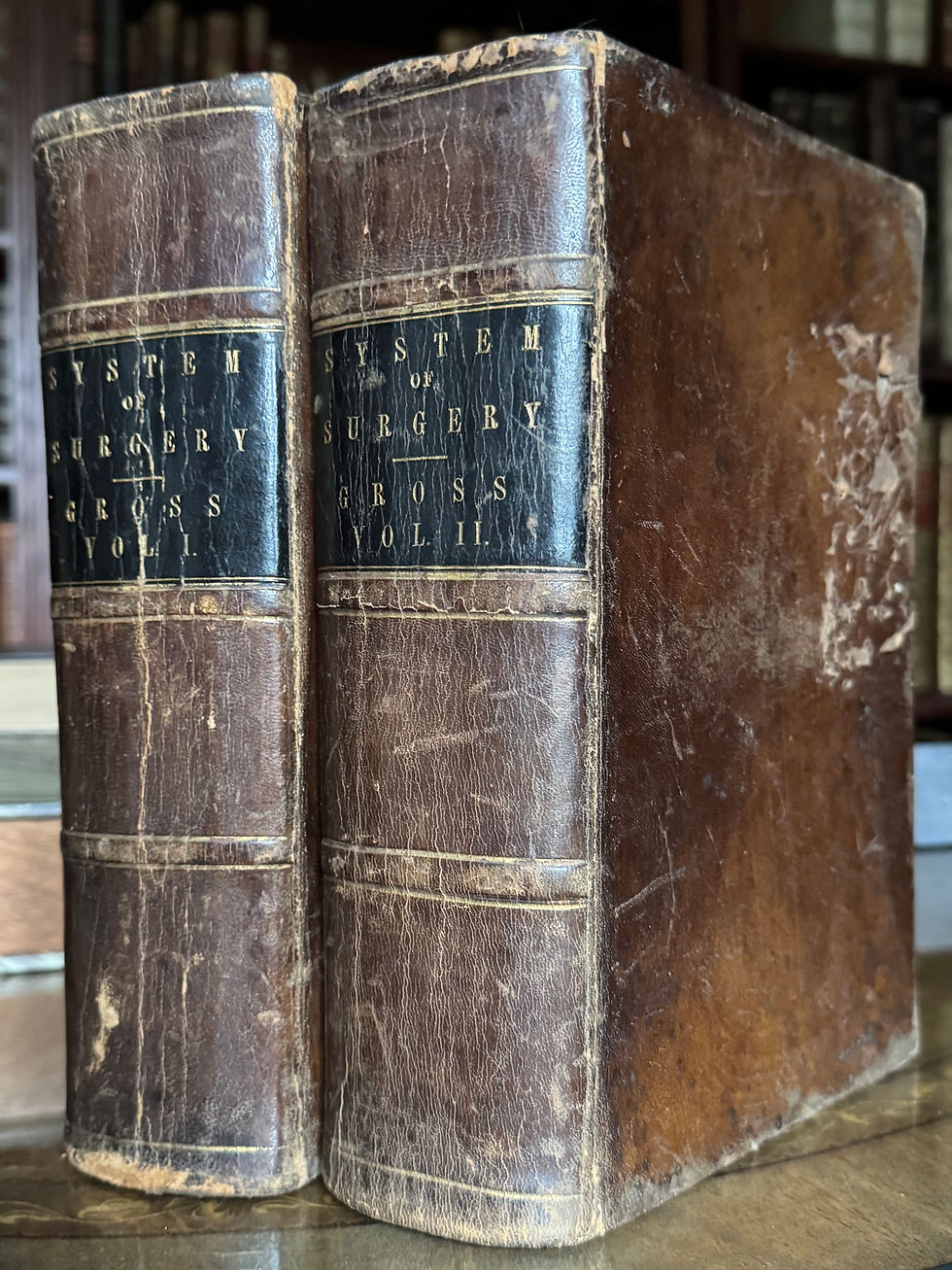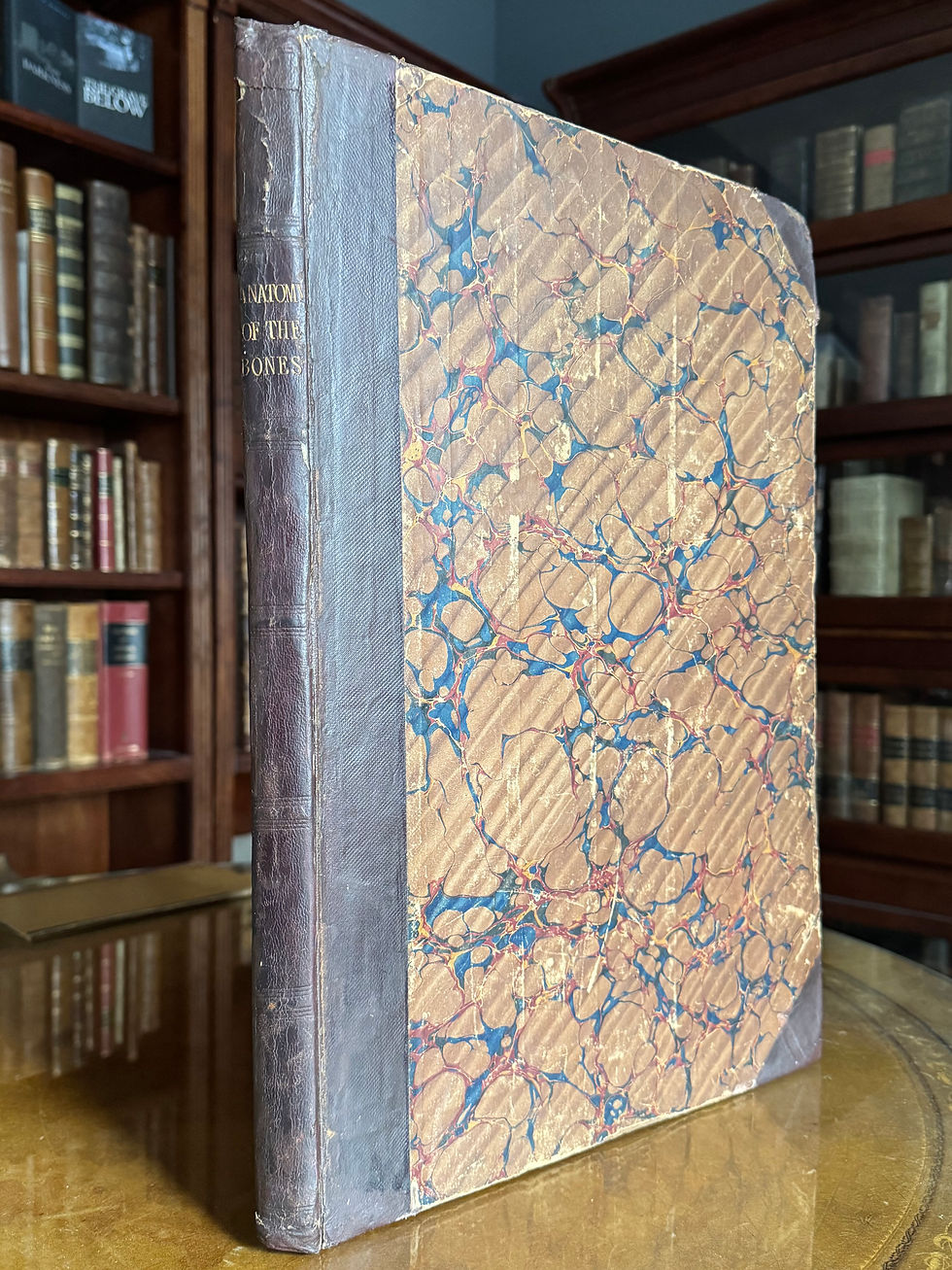Morton, Phthisiologia, 1689
Phthisiologia seu Exercitationes de Phthisi Tribus Lirbris comprehensae. Totumque Opus variis Historiis illustratum. Authore Richardo Morton, Med. D. & Regii Collegii Medicor. Lond. Socio. Londini: Impensis Samuelis Smith, ad insignia Principis in Coemeterio Divi Pauli. 1689.
Early marbled paste papers over boards, later rebacked (probably 20th century), quarter brown leather with raised bands and title label on spine. Leather very good. Paste papers and boards scuffed and chipped, particularly at edges and corners. Book plate of Iohn Ward on front paste down. Early prior owner's name in ink on title page. Manicules and marginalia here and there on first 30 pages. E4 with 2 inch closed tear. Some small bottom corner tears with loss of margins (Bb3 with loss of last word and catchword). A few creased corners. Minimal foxing. Margins well retained. Clean, bright, and tight throughout.
Ffep, Endorsement, title - (18), 411, errata leaf, advertisement leaf, blank, rfep.
Ffep, A^8, a^3, B - Dd^8, blank, Rfep.
G-M 3216: "The first application of the principles of pathology to the study of pulmonary tuberculosis. Morton showed that the formation of tubercles is a necessary part of the development of this lung disease, and pointed out that the tubercles often heal spontaneously. He noted the enlargement of the tracheal and bronchial glands in cases of pulmonary tuberculosis. The book was translated into English in 1694. Chap. I included the first account of anorexia nervosa."
See also Heirs 603.5: "In reviewing the development of knowledge, Lawrason Brown notes that by the closing years of the seventeenth century “nothing was known concerning phthisis before the stage of ulceration… [and that the first noteworthy advance was made by] Richard Morton… who published in 1689 his famous Phthisiologia. In this work he described the evolution of the tubercle, stating that the ulceration proceeded from the tubercle which, he considered, arose from glands” (Story of clinical pulmonary tuberculosis, 11). Morton “left a great treatise on tuberculosis containing an excellent clinical description of wasting. He described not only the physical deterioration from pulmonary tuberculosis but included other cachectic illnesses such as prolonged jaundice, gouty arthritis, and intermittent fevers. The spread of phthisis by contagion, which pursued a rapid fulminating course or developed into chronic consumption, was clearly presented. He believed that fresh air was helpful in prevention, recognized the hereditary disposition, differentiated two types of fever… and identified cough and loss of weight as pathognomonic signs of pulmonary consumption” (Talbott, Biographical history of medicine, 137).
















